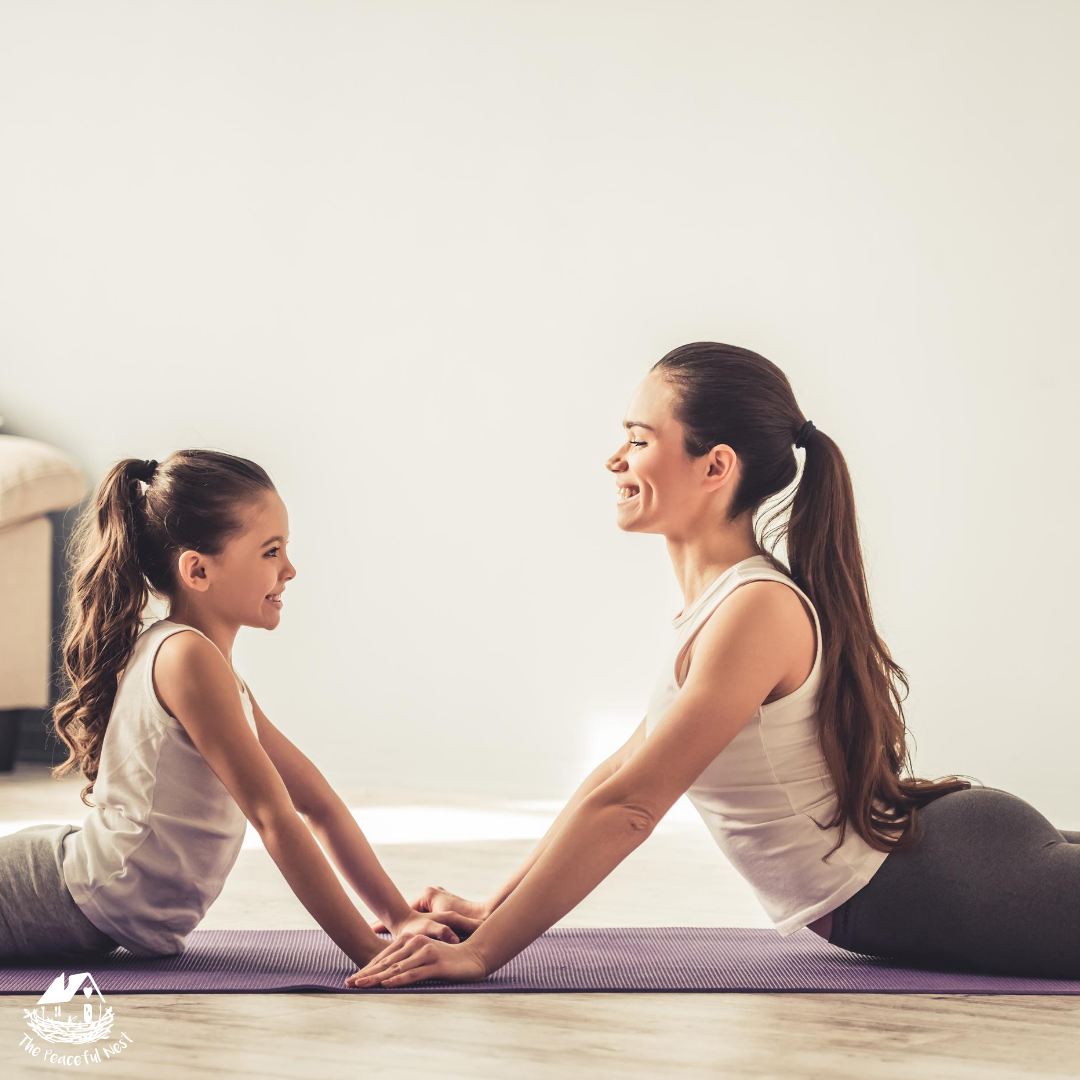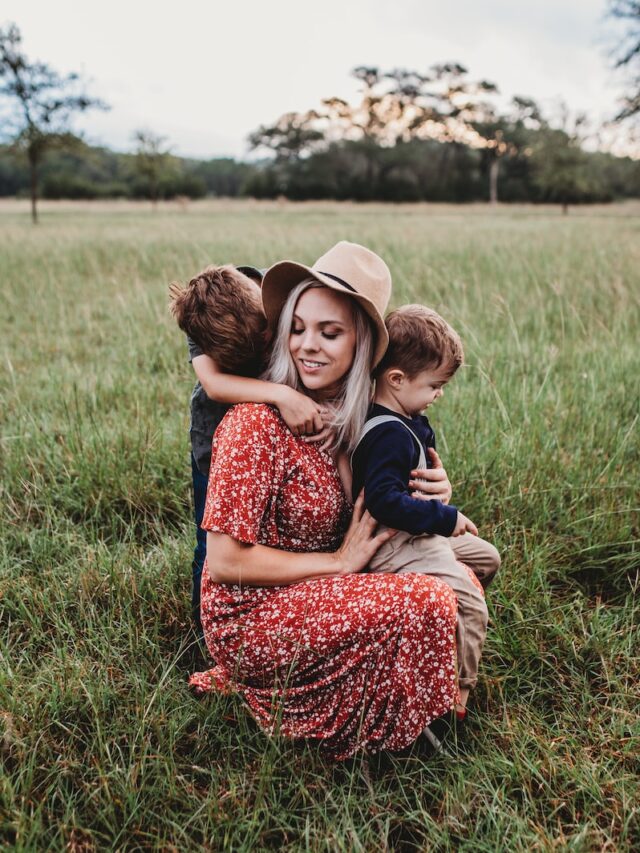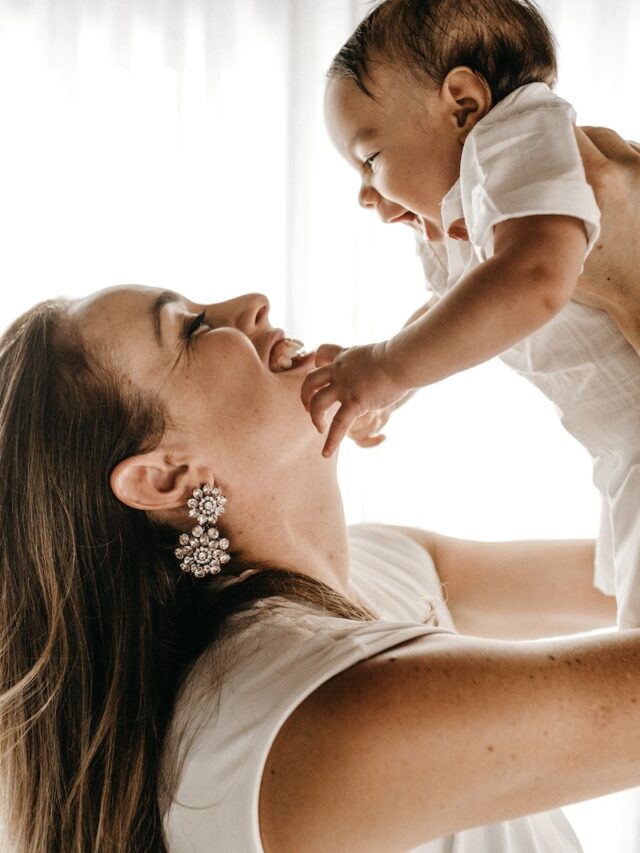Anxiety. This is a topic so many people are familiar with, yet it is not talked about enough, especially with children. As a mom whose child experiences anxiety, it has become my mission to create a calming space for her. Now, this can be done in many different ways. There is no one-size-fits-all when it comes to approaching anxiety in children. Yet, there are a few ways you can create a calming space at home for children with anxiety.
Listen to Them With an Open Mind
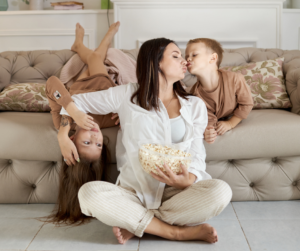
The first way you can help your child who is struggling with anxiety is by listening to them with an open mind. It can be easy as adults to shut down our children when we don’t understand why they are upset.
Maybe you had a difficult day at work. You are consumed with deadlines and meetings, and your child comes to you after school and says their stomach hurts. You realize this is not a one-time occurrence. Your child invariably comes to you with their stomach hurting after school for weeks.
Yes, stomach aches are also a sign of illness. It can also be a sign of anxiety. Listen to your child’s worries, concerns, and even symptoms they describe with an open mind.
Sometimes, your child’s anxiety will be apparent. Yet, other times, they may be masked. This means the first step to creating a calming atmosphere for your child who may struggle with anxiety is to create a space where they feel safe and heard. This will allow them to come to you with what is triggering them.
Identify What Their Triggers Are
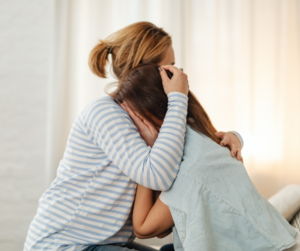
Openness makes it easier to see what may trigger your child. We all have triggers, things that annoy us. Children don’t have the skills to cope with triggers the way some adults do. This means it can be easy for them to let their minds run wild.
For example, if a child experiences a traumatic event in their life, such as the loss of a loved one, it wouldn’t be out of the ordinary for them to feel off. This may come out in behavior that seems out of character or exaggerated.
When you can familiarize yourself with what triggers anxiety in your child, you are better equipped to do two things. The first thing is helping your child manage their anxiety. The second is limiting unnecessary exposure to the triggers.
No, I don’t mean sheltering them. However, if a child is overexposed to a trigger, it can have a negative effect. This will give you the opposite results of what you want.
Help Set Up Boundaries For Them

Boundaries are essential for everyone. However, many adults cannot set proper boundaries because they are never taught. Children not taught to set boundaries may grow up to enable others, put themselves last, and not advocate for their well-being.
Your child learning how to set healthy boundaries starts with you. It first starts with you being able to establish boundaries for yourself and your family. Then, it means being able to say this is the boundary my child has set for themselves, and if you disrespect it, this will happen. (limit access, no contact, etc.)
For example, maybe your child recognizes that there is a specific situation that causes them anxiety, such as kissing or hugging another person. They say germs or the perceived threat of germs make me uncomfortable; I don’t want to touch anyone else if I don’t have to.
This is when you step up and say okay, we respect your boundary. Then, when a stranger, family, or friend doesn’t understand this boundary, you don’t side with them. You side with your child. You can say something like, “My child has chosen she doesn’t want to hug anyone; she doesn’t have to,” regardless if someone gets upset.
Maybe your child has been hurt by another person, a friend, a family member, etc., and they decided they need space and do not want to speak to them right now. You can show your child how to set proper boundaries by respecting their choices and not forcing them to talk to said person. Will this upset someone? Maybe. However, you are not their advocate. YOU are YOUR child’s advocate.
Holding the line for your child shows them that it is okay to set boundaries for yourself, even if it upsets another person.
Validate and Empathize With Them

Validation means affirming that a person’s emotions or thoughts are worthwhile. For some reason, this act can be difficult for people, especially if their thoughts and emotions do not align with their thinking.
The opposite of validation is invalidation. (read here about invalidation and how it can affect your child.)
When we validate and empathize with our children, we affirm they can have feelings about something. Do we have to always understand why they feel a certain way? No, but we can still convey that their mind, emotions, and who they are are 100% valid.
Teach Your Child to Challenge Thinking That Is Not Helping

One issue with anxiety is that it feels like a weighted blanket. It can envelop our children the same way it can envelop an adult. Anxiety in a child can make it difficult for them to think about anything other than what is taunting their thoughts.
This can look many different ways. It may look like a child who is clingy and has a meltdown when mom or dad leaves because maybe they believe something terrible will happen to you if you walk out the door.
It may look like your child is washing their hands repeatedly, maybe to the point of scrubbing them raw and bleeding. Your child may have a difficult time concentrating, sleeping, or eating. Anxiety doesn’t look the same in everyone.
However, when our children are having unhelpful thoughts, this can be a hindrance to them learning to manage their anxiety. You can teach them ways to stop unhelpful, invasive thoughts that do not seem to go away.
Teach them what God says about who they are. Pray with them.
You can teach them that learning to manage your thoughts with hard work is possible. See a doctor or therapist who can teach your child how to capture their thoughts. One book that was very helpful for us was Cognitive Behavioral Therapy.
Practice Coping Skills like Deep Breathing

Another way to help your child manage anxiety is by teaching them coping skills. Many methods can be beneficial to your child and even you. These include:
- Breathing deeply
- Counting backwards by 20
- Counting to 10
- Hugging a pillow or another person and counting to 10 or 20
- Meditate
- Try Yoga
- Journal
- Breath Slowly
Many other coping methods can be beneficial to your child when dealing with anxiety.
Work on Building Confidence

Confidence takes time and effort to build. When a child is dealing with crippling anxiety, it can affect how confident they feel. Together, you can work on building confidence. Doing so can be done in a variety of ways. Try facing distressing situations together, slowly, a little bit at a time.
For example, if your child finds themselves washing their hands 20 times in an hour, see if they can take that number down to 15 times. From there, keep lowering it until it becomes easier for them.
Another way to build confidence is by doing something your child loves together. Does she love to dance? Try taking a dance class. Does he enjoy painting? Take a parent and child art class. Whatever their passion is, encouraging your child where their strengths are will build confidence in them.
Try Mindful Activities Together

Mindfulness can be challenging to do. We walk through the day and focus on the next phase. With all the anxiety-inducing issues that we face every day, it can be hard to remember to be mindful.
Together, you can try mindful activities with your child. These activities can be:
- Playing in a sensory bin
- Go for a walk
- Talk about senses
- Stretch
- Try yoga
- Study a leaf or minor bug
- Focus on the present
- Read a book
- Study your surroundings
- Focus on breathing
Study Your Child
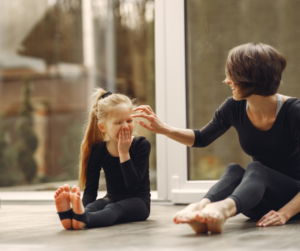
Being a student of our child can be a difficult skill to learn. It’s easier when they’re little, and we spend so much time with them. However, we become busier as they grow older, and our to-do lists get longer.
Take the time to study your child. You will be better equipped to figure out their triggers, how to connect better with them, and maybe why they have the anxiety to begin with.
Keep a Normal Routine

Whether we like to admit it or not, most people thrive off routine. Children also do very well with routine.
Keeping a routine for a child who is facing anxiety can be a huge benefit. This allows your child to feel concreted, knowing that although life can be challenging, for the most part, their routine is consistent.
Yes, sometimes things come up. However, most of the time, families can keep a somewhat loose routine. Doing this can be a great gift to give to your child.
Follow The Peaceful Nest Blog on Instagram!
View this post on Instagram
Hi there, I’m Jenna! I am a devoted mommy and wife. As well as an advocate for children and creating a peaceful atmosphere for those we love. I co-wrote Faith Actually: Living Life After Tragedy with my husband. I have my Bachelor’s Degree in Biblical Studies and currently working toward my Master’s in Positive Psychology. My number one desire is to create a peaceful home life for my family. My second desire is to share with you the tips I learn along the way!

